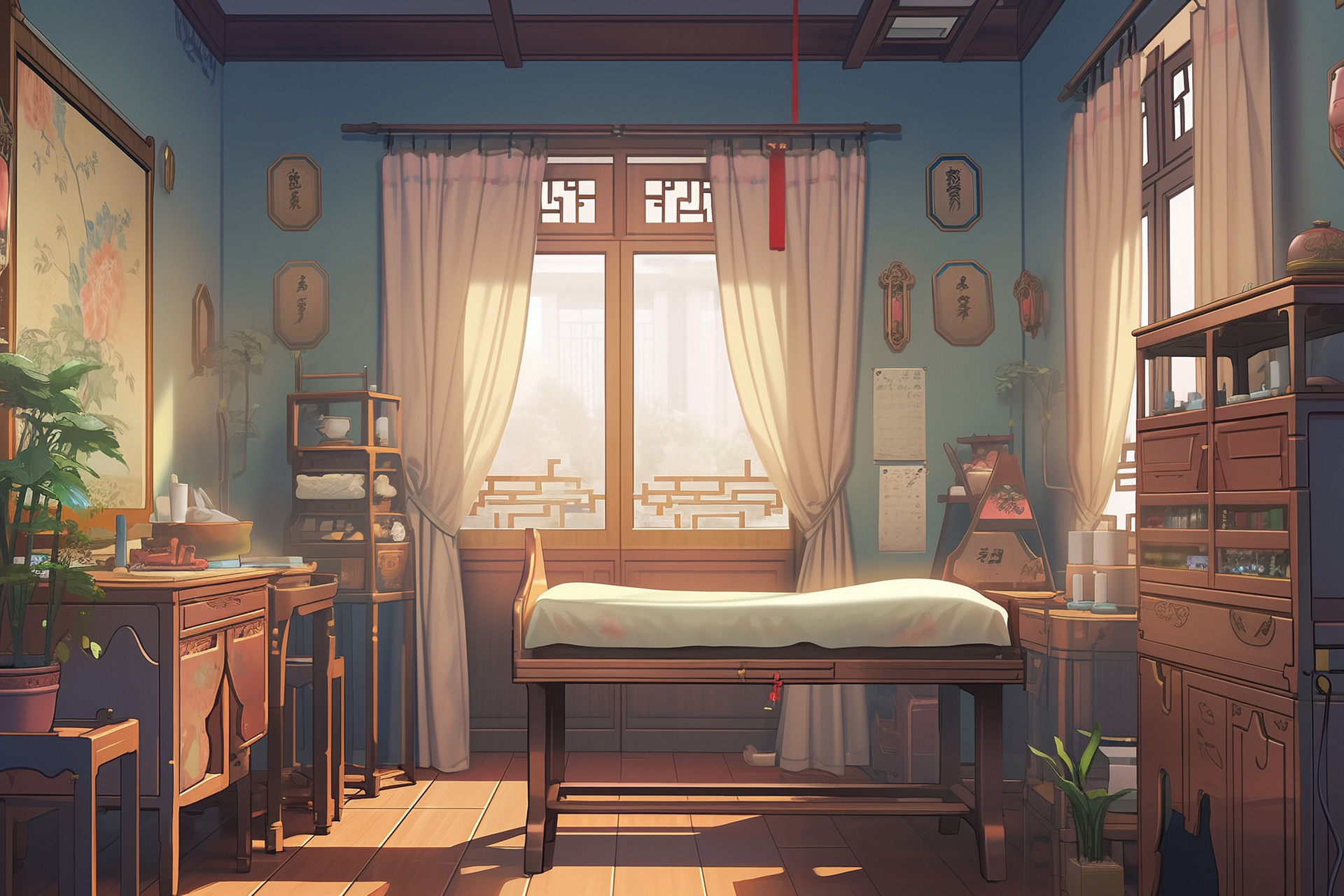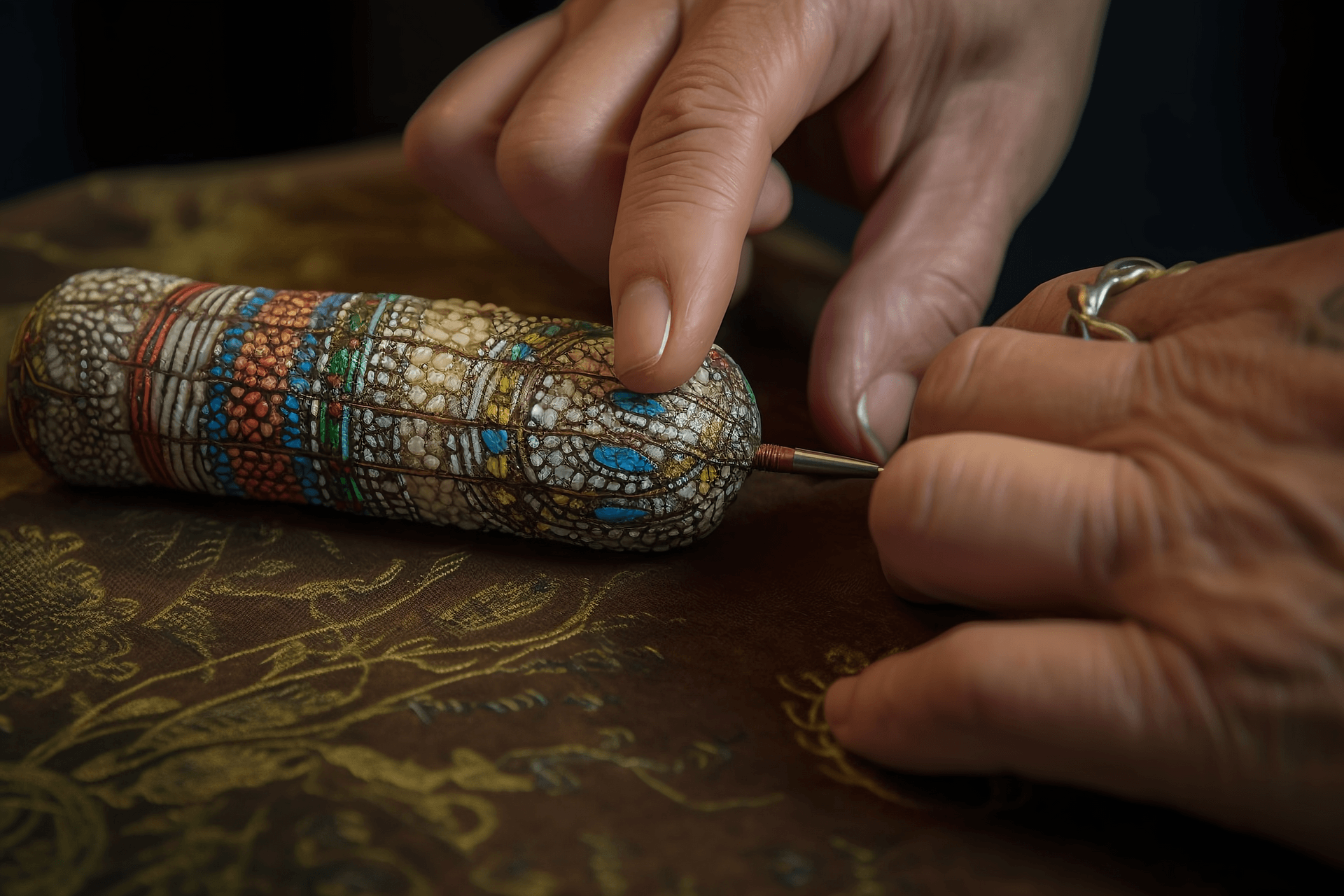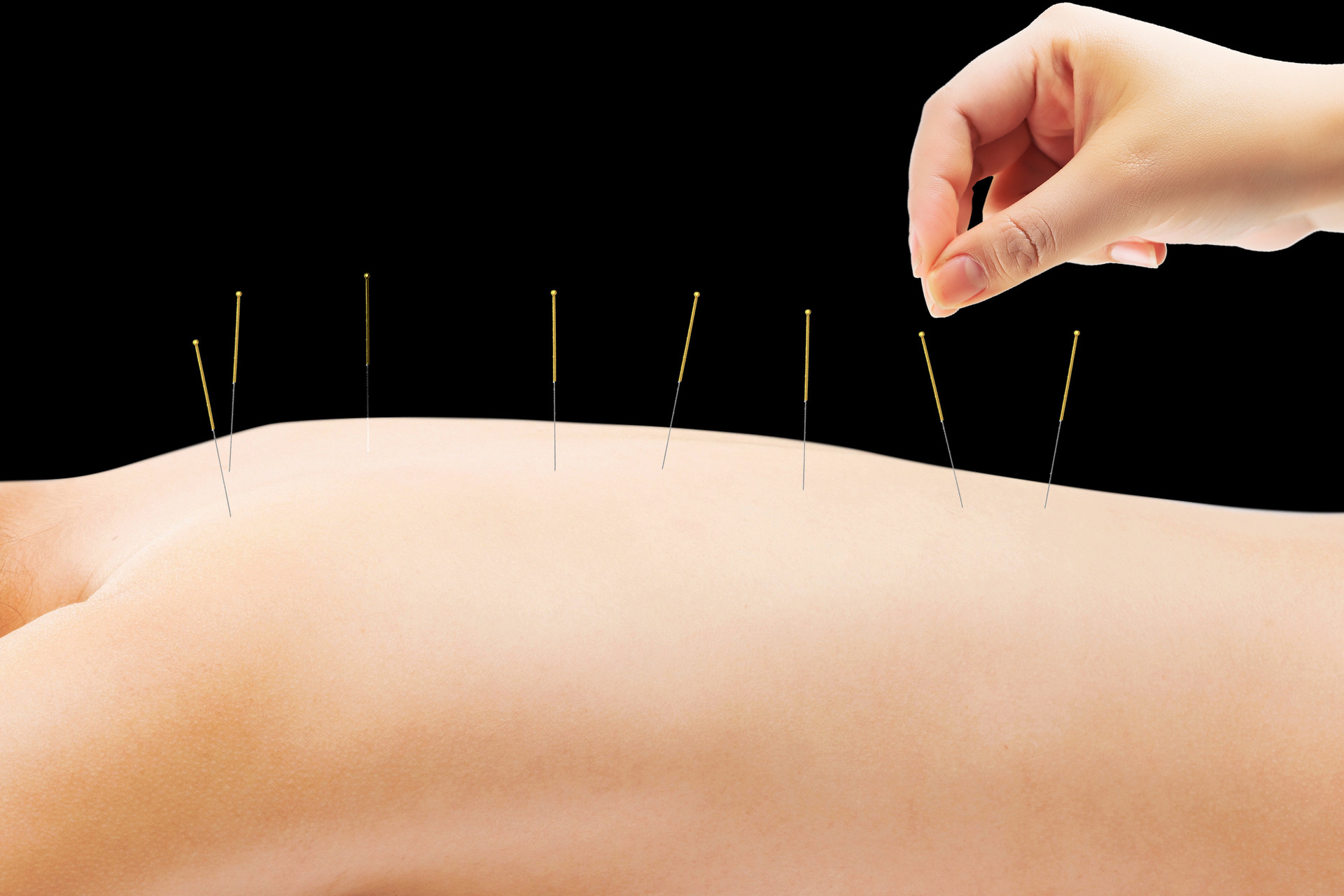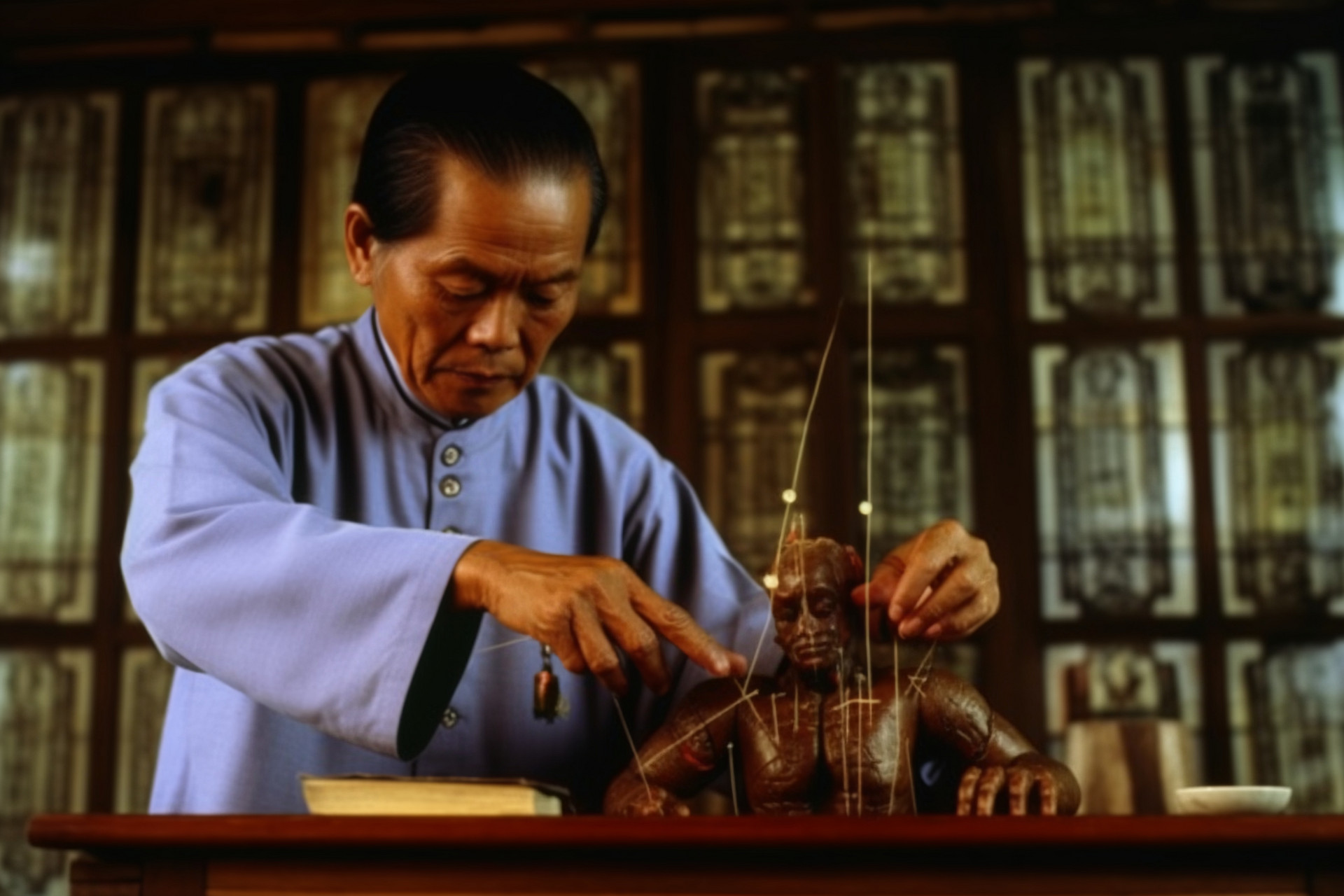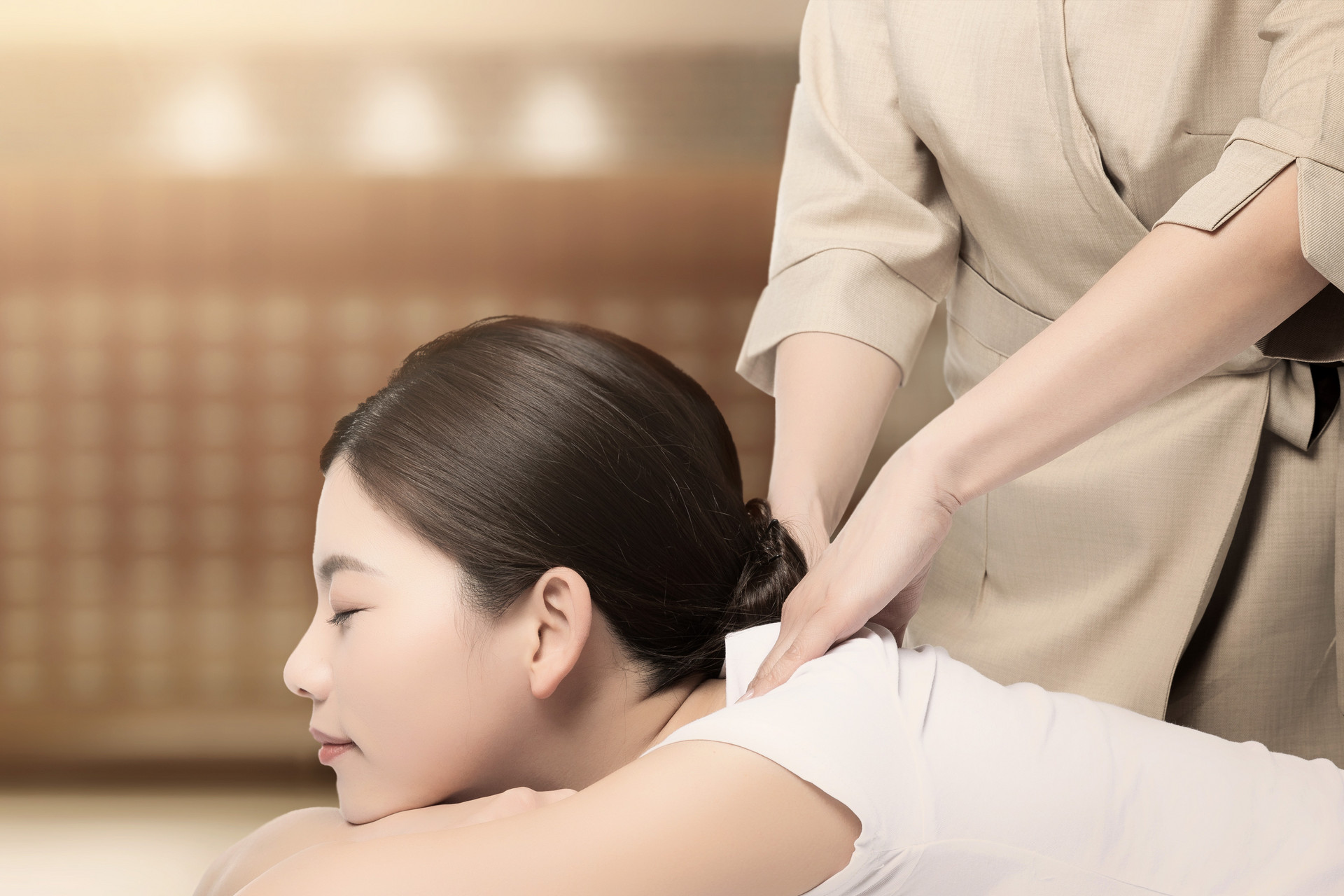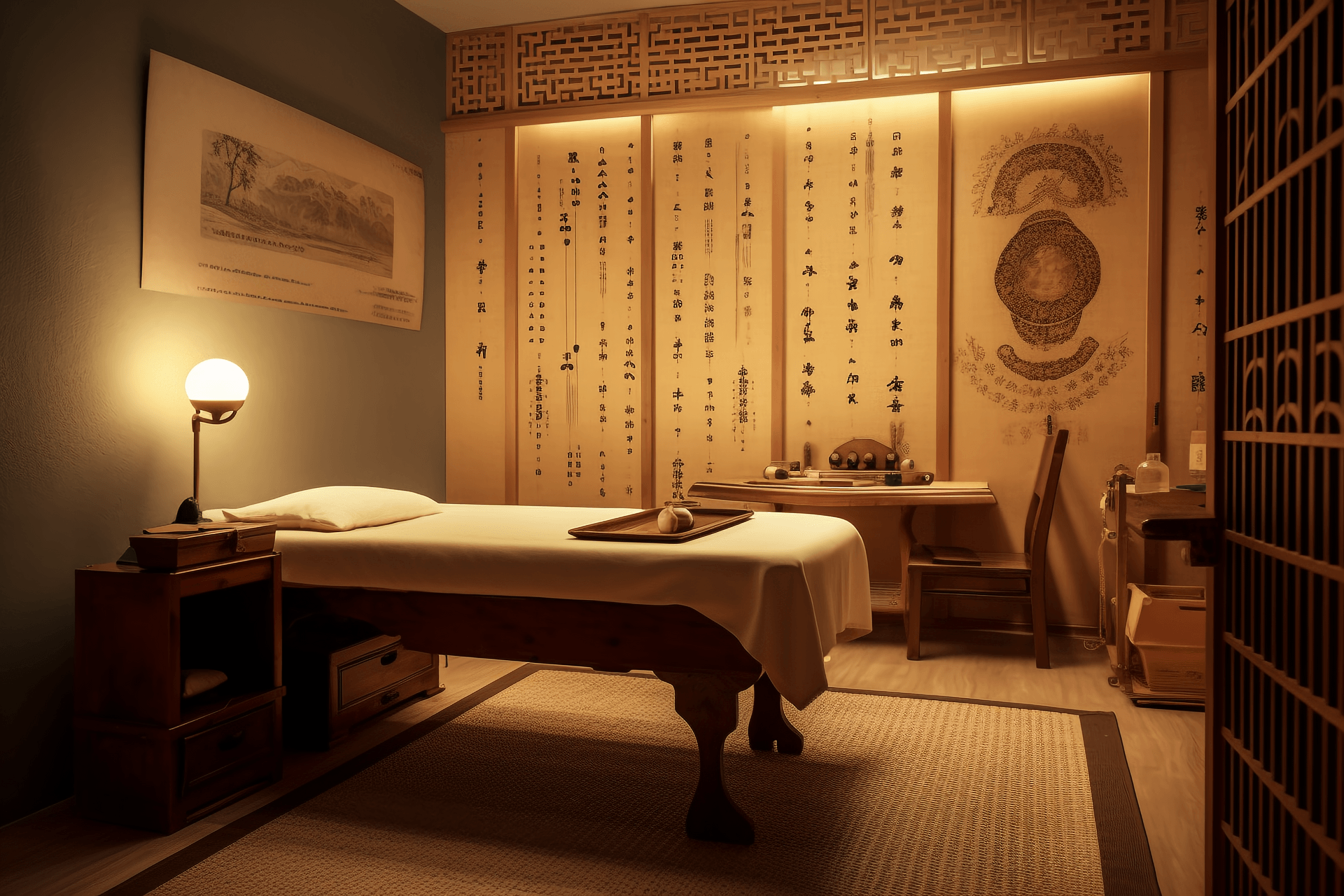The small-wide needle is a group of 6 different types of sword-shaped steel needles that are innovative based on the shape, specifications, and sizes of the sharp needle, the beryllium needle, the long needle, and the large needle in the ancient "nine needles" of China. This comprehensive therapy, which mainly uses the small-wide needle as the main method and cupping and massage as auxiliary methods, combines the strengths of three therapeutic methods and is called "small-wide needle therapy". Small-wide needle therapy is a new therapy created based on the principle of acupuncture therapy in traditional Chinese medicine, which combines acupuncture, cupping, and massage to treat diseases. It has the effects of adjusting yin and yang, strengthening the body, dispelling evil, dredging meridians, regulating qi and blood, and reducing swelling and relieving pain. It also has the advantages of using fewer acupoints, fast results, and consolidated therapeutic effects.
[Operational method]
1. Needle equipment
The small-wide needle is made of stainless steel. The needle is sword-shaped and consists of the needle tip, needle body, and needle handle. There are 6 types, named I to VI, with lengths of 130, 120, 110, 100, 90, and 80mm, widths of 4, 3.5, 3, 2.5, 2mm, and thicknesses of 2.2, 1.8, 1.6, 1.4, 1.2mm respectively.
2. Operation
1. Needle insertion steps: One doctor performs the needling, while an assistant provides dressing, cupping, and massage. The doctor holds the needle with the right hand, pinching the needle tip with the thumb and index finger to control the depth of insertion. The base of the little finger supports the needle handle, and the middle finger and ring finger support the needle body. The part of the needle that is exposed in front of the thumb and index finger is the predetermined depth of insertion. The needle is inserted vertically with wrist force and pulled out straight.
(1) According to the condition of the patient, adjust the patient's position and select the appropriate acupuncture points and steel needles. Press the acupuncture point with the left thumb, hold the needle with the right hand, and insert it quickly.
(2) Depending on the acupuncture site, use the appropriate size of glass cupping to perform flash cupping, and remove the cup after about 2 minutes. The amount of bleeding is about 2-5ml.
(3) After removing the cup, use a disinfectant gauze to press on the acupuncture point for massage. First, apply light pressure and then increase it gradually. Repeat this for a few minutes and then stop.
(4) Disinfect the acupuncture point with iodine cotton ball, apply a 1x2cm adhesive tape, and instruct the patient to remove the tape after 24 hours.
2. Needle insertion techniques: There are four commonly used techniques, which are selected based on the nature of the disease and the acupuncture points.
(1) Rapid insertion method: Insert the needle vertically without twisting or leaving the needle, and insert and withdraw the needle quickly. This method is mainly used for common acupuncture points on the trunk, waist, back, and limbs. It is the basic technique widely used in small-wide needle therapy, similar to the needling method in ancient five-needle therapy.
(2) Pointing method: This method involves lightly tapping and quickly withdrawing the needle. It is generally used for shallow needle insertion and areas where cupping is not suitable. This technique is used for acupuncture points such as Dingchui, Baihui, Sishencong, Sifeng, Baxie, and Shixuan.
(3) Scraping method: After rapid needle insertion, move the needle tip within a certain range. The movement distance is about 1.5cm. This method is mainly used to treat localized protrusions and proliferative diseases. It is often used for needle insertion in tenosynovial cysts, lateral epicondylitis, and calcaneal spurs.
(4) Two-step needle insertion method: This method is mainly used for acupuncture points with abundant muscle tissue and deep needle insertion. In the first step, hold the needle with the right hand and quickly insert it to about one cun. In the second step, the left hand that presses the acupuncture point quickly changes by gently pinching the muscles and skin on both sides of the acupuncture point with the thumb, index finger, and middle finger. While slowly advancing the needle, withdraw the needle after reaching the predetermined depth. This method is often used for needle insertion in Shuizhong, Huanjue, and Weizhong points.
[Main diseases treated]
1. Migraine, cervical spondylosis, shoulder periarthritis, lumbar spondylosis, sciatica
1. For migraine, use the pointing method or rapid insertion method on Baihui, Qianting, and Taiyang points; for neck and shoulder pain, use Dazhui, Tianzong, Jianyu, and Bierong points.
2. For back and leg pain, use the two-step needle insertion method on Dachangshu, Zhichuan, Huanjue, Weizhong, and Chengshan points.
2. Lateral epicondylitis, tenosynovial cyst, calcaneal spur
Use the scraping method on the affected areas.
3. Cerebral hemorrhage, subarachnoid hemorrhage, cerebral infarction, cerebral thrombosis
Use the pointing method, rapid binding method, or two-step needle insertion method. In the acute phase, use back points; in the recovery phase, use Jianjing, Tianzong for upper limbs, and Huanjue, Weizhong, Chengshan for lower limbs; for facial paralysis, use Taiyang, Dicang, Yingxiang, and Jiache points.
[Precautions]
1. Strictly disinfect needle equipment and the skin at the acupuncture points.
2. Select different types of needle equipment according to the condition and acupuncture points. For severe cases, use deeper needle insertion and choose needles of size 1 or 2; for general use, use size 3 or 4 needles, mainly for acupuncture points on the waist, back, head, face, and limbs; size 5 needles are commonly used for peripheral limbs in adults and waist and back in children; size 6 needles are mainly used for acupuncture points on the head, face, and peripheral limbs in children.
3. Generally, perform needle insertion once every 7-10 days, with 3 treatments as one course. Rest and observe for 1 month. If symptoms persist, another course of treatment can be performed. For facial paralysis, perform acupuncture every 5 days, with 5 consecutive treatments as one course. Use the scraping method.
| 1 2 > >> >>|




